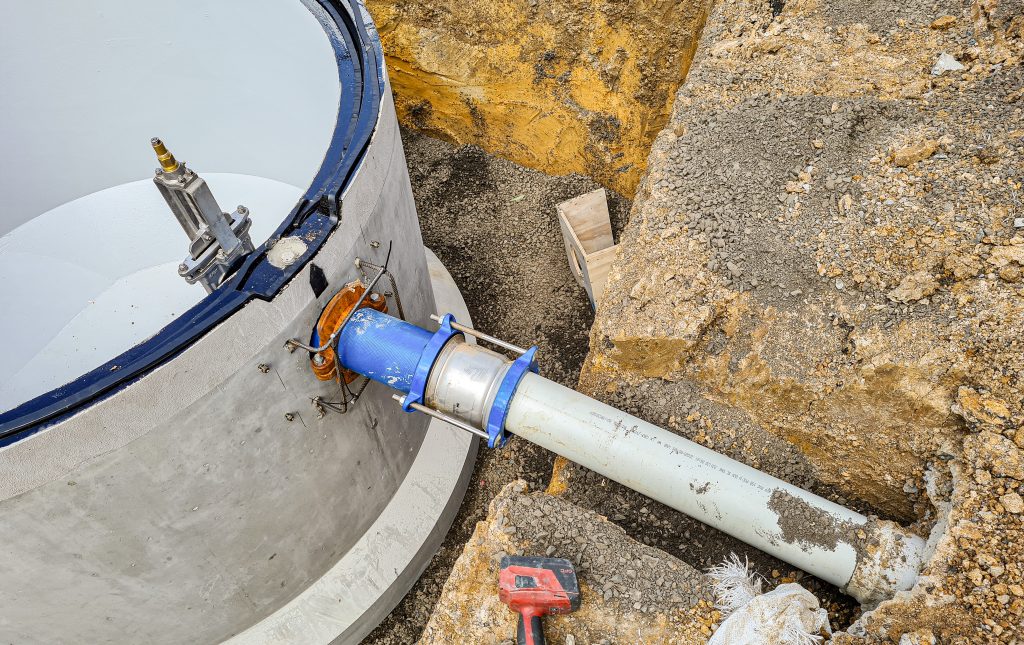
When it comes to pump station pipework selection, infrastructure planning isn’t just about choosing familiar materials—it’s about matching material behaviour to environmental conditions, hydraulic requirements, and maintenance realities. Understanding and addressing the unique characteristics of each pipework option is essential for creating resilient infrastructure that delivers reliable performance throughout its design life.
_________________________________________________________________________________________________________
Pipework material selection poses unique complexities because different materials respond distinctly to corrosive atmospheres, thermal conditions, and mechanical stresses. Unlike simple conveyance applications, pump station environments create aggressive operational parameters that can span decades of exposure to H₂S, chemical dosing, and cyclic loading.
The infrastructure must be specified from the outset to withstand site-specific conditions, even when initial budget pressures favour lower-cost options. This includes evaluating wet well atmospheres, surge characteristics, alignment requirements, and maintenance capabilities to avoid costly premature failures. When material assumptions prove inadequate, catastrophic operational problems occur, affecting service reliability, maintenance budgets, and asset longevity.
_________________________________________________________________________________________________________
Atmospheric conditions present the most significant challenge—harsh, damp, or coastal environments accelerate corrosion in susceptible materials, creating coating failure and maintenance issues. Hydraulic considerations make material selection more complex, as surge events and vacuum conditions can cause structural failure in inadequately specified systems.
Installation quality directly impacts vulnerability—poor welding, coating damage, or improper joint assembly create long-term reliability challenges. Temperature exposure also matters, as intermittent hot flows or ambient conditions may exceed material limitations during operation. Material compatibility requirements often demand careful detailing at dissimilar metal interfaces, regardless of primary material selection.
_________________________________________________________________________________________________________
Successful specification requires matching material characteristics to site-specific conditions. For harsh, damp, or coastal wet-wells, PE100 PN16 HDPE offers outstanding corrosion immunity and leak-free fusion joints. For dry-well manifolds needing rigidity and clean presentation, 316 stainless steel provides excellent dimensional stability and temperature tolerance when properly welded and passivated.
Ductile iron excels in negative-pressure scenarios and high nozzle load applications, though coating integrity determines long-term performance. Critical detailing practices include isolation gasket kits at dissimilar metals, air/vacuum valves for HDPE systems, and post-weld passivation for stainless installations. Proper support spacing, expansion allowances, and dismantling joints ensure all systems accommodate maintenance requirements throughout their service life.
_________________________________________________________________________________________________________
Material evaluation must account for unique environmental and operational factor combinations. Fundamental planning involves assessing atmospheric conditions, surge/vacuum characteristics, and alignment tolerances while ensuring practical installation and maintenance access. This requires thorough site analysis including chloride exposure levels, temperature ranges, and available construction space.
Design specifications must consider worst-case scenarios, including coating damage during installation or extended exposure to corrosive atmospheres. Total system integration—material selection, joint detailing, and support design—must accommodate all operational demands with appropriate safety margins. Professional engineering analysis ensures all performance variables are properly integrated into comprehensive pipework specifications.
_________________________________________________________________________________________________________
Quality assurance can make or break pipework outcomes regardless of material selection. For stainless steel, enforcing purge-weld procedures and documented passivation prevents premature corrosion failures. HDPE requires qualified fusion operators and proper SDR verification for vacuum resistance.
Ductile iron demands high-build epoxy application, holiday testing, and site repair protocols to maintain coating integrity. Implementation discipline requires careful material handling, joint assembly verification, and protection of vulnerable surfaces during construction. Quality inspection and proper commissioning from day one ensures installations deliver expected performance throughout all operational phases.
_________________________________________________________________________________________________________
Contact our engineering team for comprehensive pipework assessment of your next project.